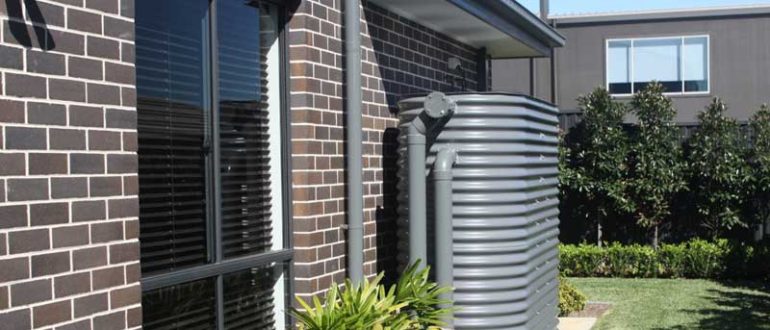Water comprises approximately 60 percent of the human body, making it an essential consumption. Our bodies tend to lose water through various biological processes like sweating and waste elimination. Thus, to keep our body’s water percentage stable, we need to drink water regularly, let it be from any source. However, the question arises what water sources are actually and genuinely safe for suffice of maintaining human health. This is where the question of rainwater appears; the most significant water source is questionable for human intake, and why is that, and how can you make it suitable for drinking? You’re about to find out.
Why is drinking rainwater not safe?
Rainwater takes many routes until it reaches the surface, where it is exposed to different levels of the atmosphere, which allows it to pick up any contaminants that might be present in the air. Various areas such as hot radioactive sites, chemical plants near plumes of power plants are considered highly unsuitable for the consumption of rainwater going through the particular atmosphere. The running water could pick up toxic chemical waste from these surfaces, making it highly probable that it should not be consumed.
Making rainwater safer
Some of the traditional ways people have been following for a fairly long time to clean rainwater are boiling and filtering it. Boiling kills off the pathogens, and then filtration removes contaminants such as chemicals, mold, pollen, dust, and many more.
Harvesting rainwater is also another much more straightforward and practical way to deal with the water crises efficiently. As people shift their priorities toward an eco-friendly lifestyle, harvesting has become a much more popular option. It allows eco-conservation and intelligent use of natural resources. With the water levels in urban areas decreasing with time, it is the best option available at any scale.
The basic and the traditional method of Harvesting rainwater is passing it through specially designed stone flooring, layers of sand, and then the filtered water is collected at the bottom in a well.
Why harvest water?
- Reduces the scarcity of water – With the earth’s population growing, the need for the essential consumption, such as water, has increased with time. And with the rise in the requirement along with inadequate sources, we have been struck with scarcity. Harvesting can be one of the permanent solutions to water crises for various countries around the globe. It can be most efficiently workable in areas with an abundance of rain but insufficient groundwater supply.
- Prevent water-borne disease – Since some of the third world countries worldwide have no source of clean water, people have no other choice but to consume the polluted water from any source that they get. With the consumption of contaminated water, they are fully exposed to being attacked by water-borne diseases. Harvesting is the cheapest and the most reliable solution to the high mortality rate due to inadequate water consumption.
- The rise in groundwater level – Storing the clean water produced through harvesting can be consumed for future use, in return revitalizing the groundwater level. It will help raise the groundwater level, making it easily accessible in the future.
Ways to Filter Rainwater - Filter and Disinfection:
A filter’s efficiency can be measured by looking at the smallest size of particle it can filter. The smaller the size of the particle, the more efficient the filter. However, it is an expensive process as the filters need to be regularly changed to prevent microorganisms from striving in a dirty environment. Aside from filtering, the rainwater needs to be disinfected before use to create quality drinking water. Some of the disinfection processes that are being used are UV light, Membrane filtration, and chlorine. - Chlorine:
Chlorine being an efficient source of eliminating water-borne diseases such as typhoid, hepatitis, cholera, and dysentery, have saved the lives of thousands of people. It is being used as a significant disinfectant in many public water systems.
The amount of chlorine to be used is estimated by looking at the quantity, temperature, and pH level of the water. However, chlorine is very reactive and can easily combine with naturally occurring organic material creating a harmful chemical reaction like chloroform that is extremely dangerous for humans. Precautionary steps need to be taken before using chlorine as it carries the risks with it. - Ultraviolet Light:
It is one of the oldest ways of disinfecting rainwater, being used for nearly a century in Europe and becoming increasingly popular in the United States. The UV lights work by penetrating the organisms’ cell walls and preventing the reproduction process, making them harmless. It also contains the production of any by-products by maintaining the original chemical composition of water.
Like chlorine, UV light also requires specific preventive measures and prior knowledge on how to use it as a disinfectant. The right dose must be used for a specific unit of water; the UV bulb must be replaced after 9000 hours of use are some of the many things that need to be taken care of beforehand.
Conclusion
Although rainwater might seem like an easier way to obtain drinkable water, it is still not considered safe to purify it on a smaller level, such as your home or office. However, if done so, it must be ensured that the collection method is correct, treatment has been carried out correctly, and testing has been done before consumption. In any case, it is suggested that expert personnel should set up the plants where the rainwater can be filtered and disinfected.
On a larger scale, harvesting and then disinfecting it through various available process has been proven very beneficial, saving loads of human lives and allowing them to live a healthy lifestyle.

